Paraguay-the Emptiness in Between the Places Tourists Want to Visit
March 2021: I have always been intrigued by places that are seldom visited by foreign tourists, places where internet searches turn up mostly blank pages. Paraguay is no exception to this. Paraguay is the third least visited country in South America behind Guyana and Suriname, however if you remove the Brazilian tourists who mostly visit Paraguay for cross border shopping of cheap goods, I will venture to guess that Paraguay is the least visited country by foreigners in all of South America.
Why do so few tourists visit Paraguay? The main reason for this is because there are so few prominent tourist attractions like Iguacu Falls, located just across the eastern border of Paraguay along the Argentine/Brazilian borders or the Andes Mountains just across its western border in Bolivia and Argentina.
A Country with a Unique and Bloody Past
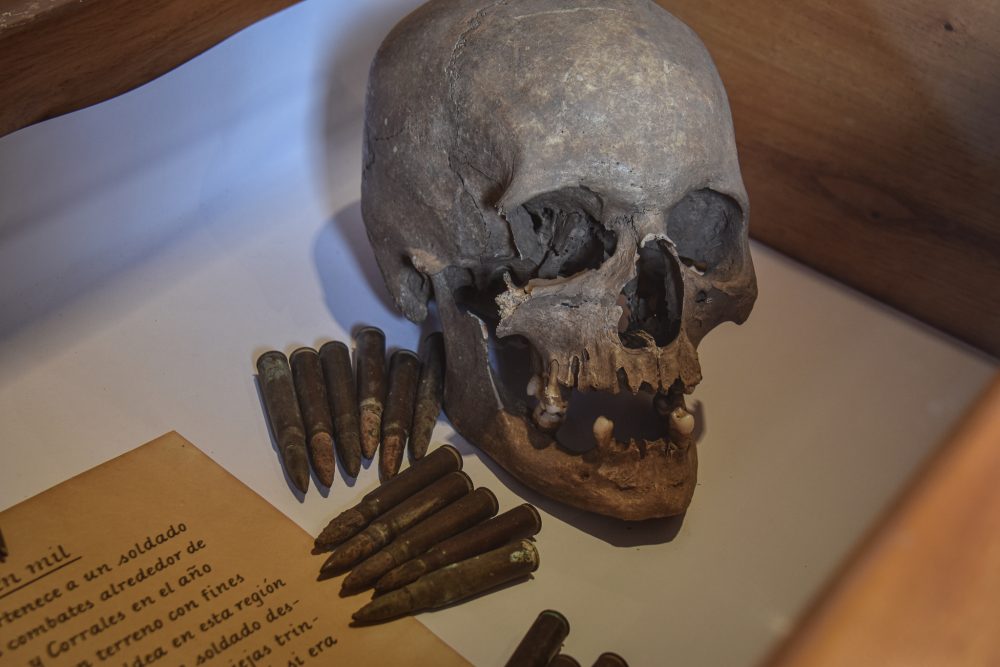
A skull of a soldier that was found at a battlefield from the Chaco War/Mennonite Museum in Fildelfia
Another reason to visit any country aside from its natural beauty is to learn about its history and Paraguay has some of the most interesting history of any country in South America.
- Paraguay despite its current tranquilo nature, like most countries has seen war. The distinction in Paraguay’s war history is that 98% of the men died in the Triple Axis War with Brazil and Argentina in the late 1800s. Due to a lack of men to fight in one battle, children were forced to fight and given painted on mustaches to appear adultlike. The ensuing massacre was one of the worst of the war.
- The indigenous language of Guaraní is the most widely spoken language in Paraguay largely because of the efforts of the Jesuits to protect the indigenous people during the early years of European colonization and because of a decree by a dictator in the 1800’s who wanted to eliminate the control of the European elite by mandating Paraguayans to marry outside of their ethnic groups.
- Paraguay fought a war with its other neighbor Bolivia in the early 1900s over the prospect of oil in the Chaco. 100,000 people died mostly from malaria and dehydration from fighting in the grueling dry jungle conditions. Unlike the Triple Axis War, the Paraguayans won the Chaco War.
- Many Germans migrated to Paraguay after World War II. Some were Nazis fleeing prosecution from war crimes. One was the prominent Nazi-Josef Mengele-a doctor who conducted deadly experiments on prisoners. One legend even existed that Hitler may have faked his death and fled to Paraguay living out the last of his years there.
The Chaco Region
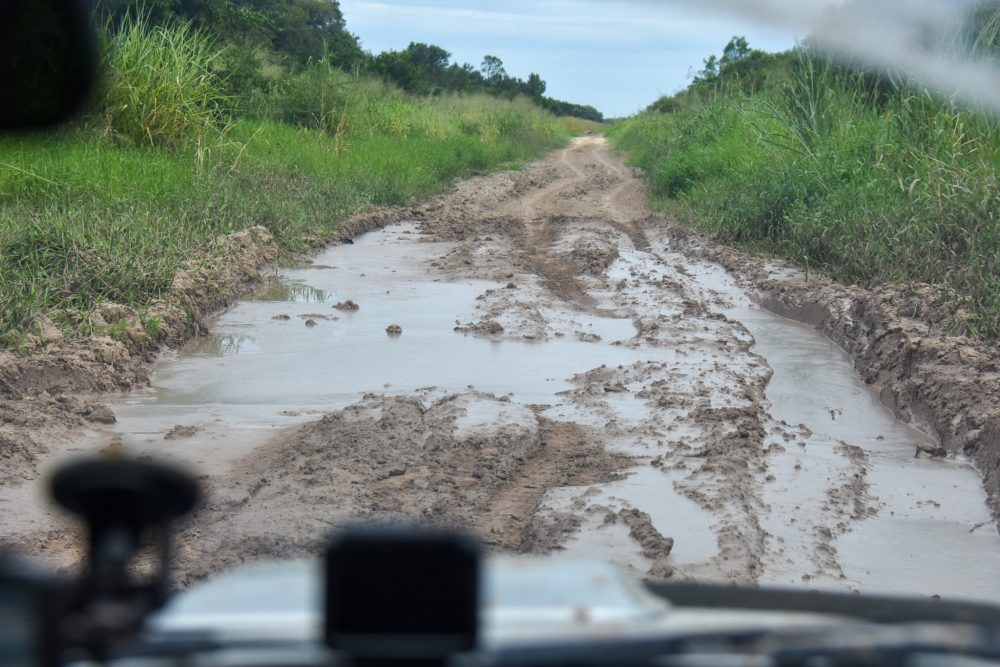
The Condition of the Road to Bahia Negra
What I like about Paraguay the most is the vast area of emptiness it possesses. Almost all of western Paraguay lies in the vast Chaco region, which contains the world’s largest tropical scrubland forest. The area is even known to still have un-contacted nomadic tribes living in its wildest parts. To the north of the Chaco is the Pantanal-the world’s largest wetland. It was these two places that grabbed my attention the most and what I came to Paraguay to see.
Paraguay also is not the easiest place to visit. Almost half of the country lies in the Chaco region- the western half of the country and is only accessible by one partially paved road. Although many beautiful parts of the Chaco can be reached via this paved road, it is my opinion that the best parts of the Chaco..the most preserved parts are only reachable by the many dirt roads, many of which are in poor condition like the one shown above on the way to the Pantanal town of Bahia Negra.
Tres Gigantes Pantanal Reserve
With one week in Paraguay, I chose the Pantanal region of Tres Gigantes to visit. The region is very remote (two days of road travel each way) and is home to a wide array of wildlife and is named the “Three Giants” because it is one of the only known places in the world where the giant anteater, giant armadillo and giant river otter can be found together in the wild.
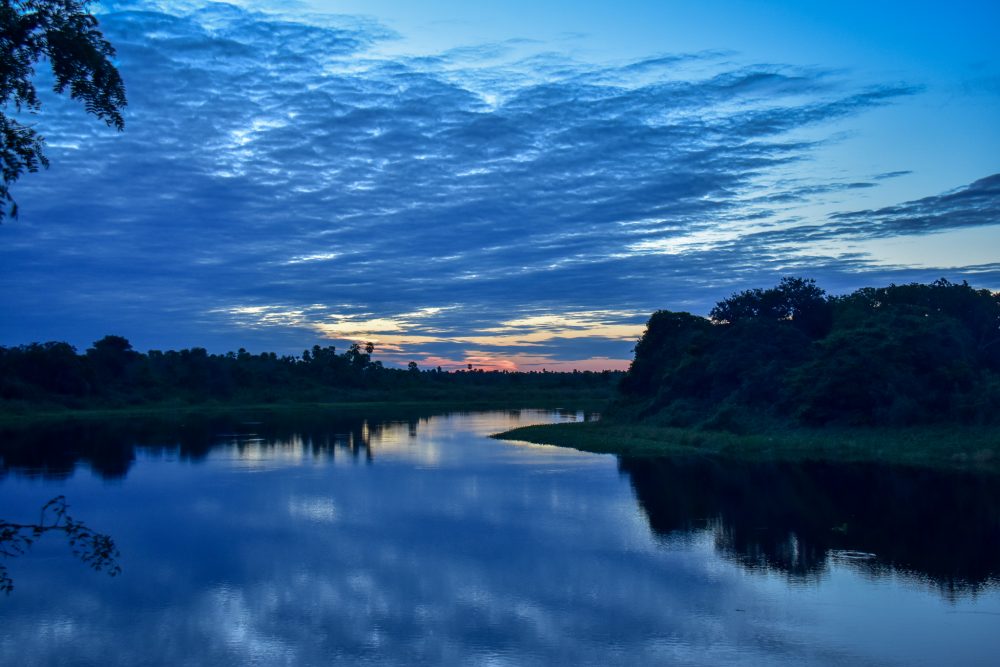
Photo of the Pantanal where Tres Gigantes Reserve is Located
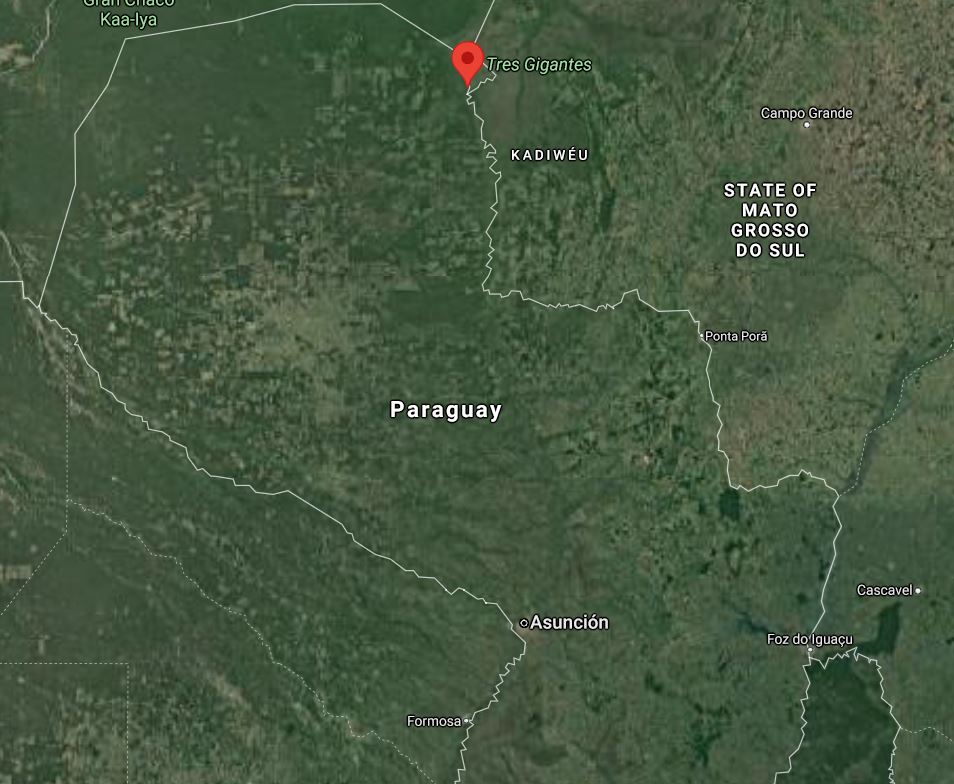
Tres Gigantes is marked with the red pin on top of the map. We drove two days each way from Asuncion to get there. There is no way to get there via Brazil or Bolivia as the whole area is surrounded by Pantanal wilderness and there are no roads.
The Long Road to Tres Gigantes
To get to Tres Gigantes, we had to drive two days. The trip began from Asuncion-Paraguay’s capitol. The first day was approximately 6-7 hours of driving to the Mennonite town of Fildelfia along the Trans-Chaco highway, the only paved highway across the Chaco-due to change once road construction of another asphalted route from Brazil is completed. The second day was about 10-12 hours of driving on awful dirt roads through the Chaco. The last section of the road to Bahia Negra is notoriously bad, requiring a 4-wheel drive vehicle and was questionable as to whether it was passable at all during the time of our trip.
COVID Lockdown
As if planning a trip across the remote Chaco region to Tres Gigantes wasn’t difficult enough, a few days before our arrival to Paraguay, the president declared a national COVID lockdown due to climbing rates of the disease due to the new Brazilian variant which was sweeping across the shared border. The lockdown not only created a lot of uncertainty of whether we could visit Tres Gigantes, it left us wondering if we could do much of anything in Paraguay.
Avoiding the Lockdown Controls
Normally when I travel, I hire a vehicle and drive it myself, but in this situation, I needed more assurances to salvage the trip from the un-relenting grip of Covid and its trip killing tendencies. Also, I needed to ensure that we could navigate safely through some of the remote and unforgiving roads on the way to Bahia Negra. So, I hired a 4×4 vehicle, driver and guide-Jose- that my traveling companion Richard used in his previous trip to Paraguay.
Jose was excellent in responding to all of my questions in the leadup to the trip. Jose and I brainstormed for ideas to navigate through the Covid lockdown and through any potential checkpoints. The solution we came up with was to claim that we were in the media, an extremely dubious claim since the closest thing to the media about us is me having this website and Richard previously making a You-Tube documentary about Paraguay. But claiming we were media would allow us to be exempted from the lockdown measures during our travel across the country. Jose was also well connected and had contacts in every police District as well in the military, which we would need to cross checkpoints and to travel along the national river border to Tres Gigantes.

My wife Paula standing next to our vehicle with our printout alerting potential police checkpoints we are media.
Given that residents were not allowed to venture more than 500 meters from their place of residence due to the lockdown, I was skeptical of our prospects to leave town. While Asuncion seemed crazy, we soon found out that not only was it easy to leave town, but there were also absolutely no checkpoints anywhere along the highway. Outside of Asuncion, in the wild west of Paraguay, especially outside of the city, no one seemed to really care about Covid, and the countryside was too remote and logistically challenging for police to enforce Covid restrictions.
Mennonite Country
In the mid 1900’s the Mennonites fleeing Europe for various reasons, migrated to Paraguay to establish settlements in the middle of the hostile Chaco where they were promised to be left alone in exchange for taming the wild west of Paraguay. We stayed in the regional capital, the Mennonite town of Filidelpia. After driving hours through the wild scrub jungles of the Chaco, we suddenly entered an area of verdant farmlands, Germanic Street names and cattle ranches that reminded me of southern Minnesota.
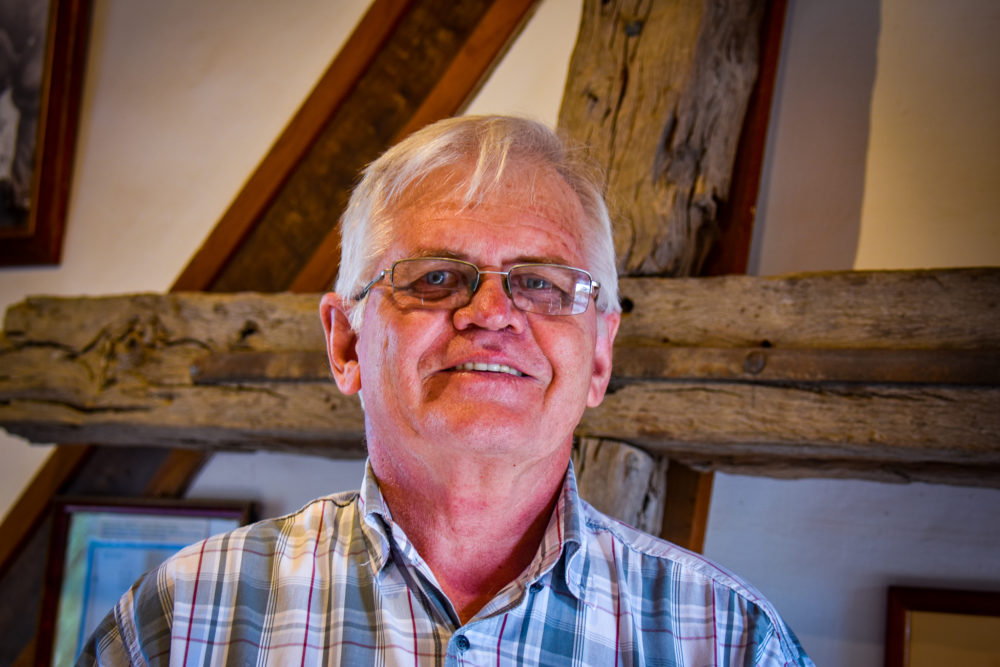
Mennonite Man Standing in front of a Cross Found Buried at a Battlefield in the Chaco War
The Longest and Hardest Day of Driving
On the night before setting off on a 10–12-hour long drive to Bahia Negra, we received word from locals in that area that the road was impassible. This was crushing news and left me researching back up plans to other parts of the Chaco. Luckily when all seemed lost, we received another message from the Bahia Negra area that a truck had successfully passed the road to Filidelpia. This was good news and meant that we too could succeed-maybe.
The road was dusty, and for hours at a time the scenery revealed few signs of human settlements. Instead, we watched as nothing, but dry forest passed by the window at times revealing spectacular birdlife such as toucans, cranes, and eagles. We also came across an anaconda that scurried off into a swamp.
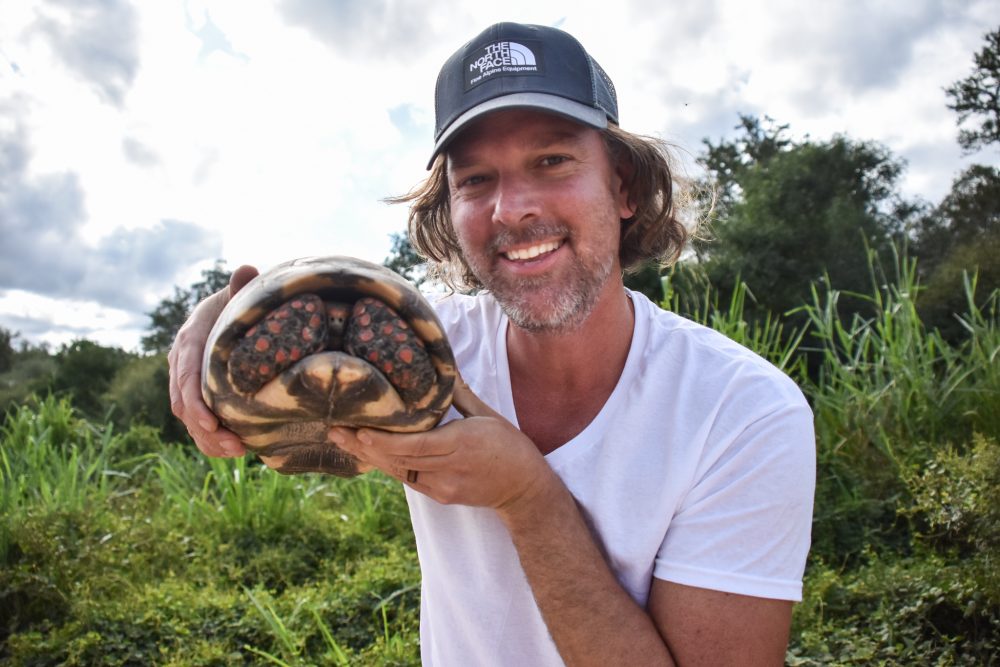
My favorite wildlife sighting was of the red footed tortoise. The little guy was crossing the road and when he caught sight of us, he froze and hid in his shell on the side of the road instead of disappearing into the scrub, which he easily could have done.
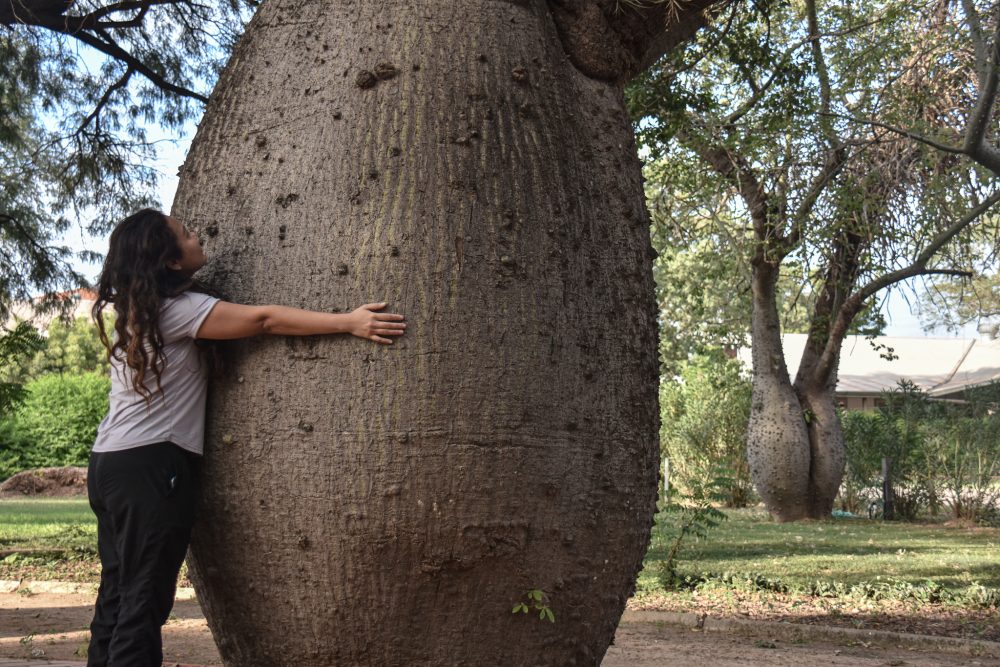
Paula hugging a Bottleneck tree, Common in the Dry Chaco Forest
Engine Malfunction in the Middle of Nowhere
At one point in the middle of nowhere our truck lost its ability to accelerate and the engine started squealing. After a hour of driving the dirt roads at 20 mph and wondering if we would need to sleep overnight in the truck, the truck returned to normal after the driver cleaned out the engine air filter. This was a temporary fix however since the engine turbo was broken and the engine was under a lot of stress. As a result, our vehicle would eventually die on our return trip to Asuncion. Thankfully it waited to do so once we were back in Filidelpia at our hotel. We were able to get a replacement vehicle to pick us up the next morning.
Remote Dusty Pantanal Town of Bahia Negra
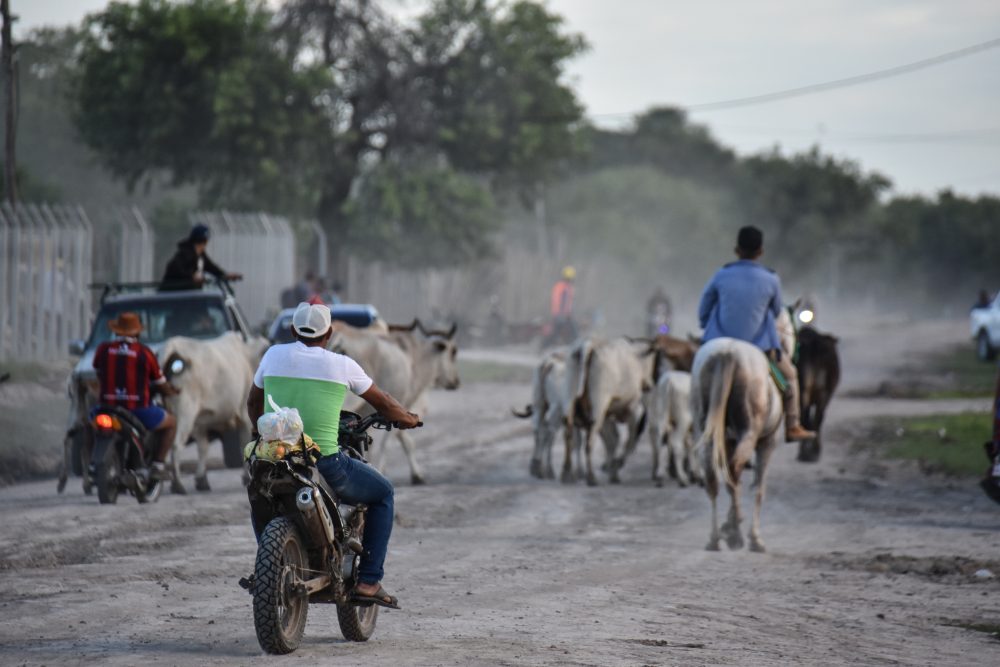
Rush Hour in Downtown Bahia Negra
We finally reached the isolated town of Bahia Negra in the northern corner of Paraguay in the afternoon. The dusty little frontier town situated on the Paraguay River is one of the hardest towns to reach in Paraguay. It is surrounded by the wilderness of the Pantanal wetlands. On the other side of the river is Brazil and more Pantanal jungle. The only road into town is impassible for about 4 months every year due to the rains. Flights operated by the military are rare and commonly cancelled. A recent military flight stopped operating because it crashed killing all of its occupants. The rickety river ferry that travels from Asuncion takes a week to arrive and its schedule has been disrupted due to Covid.
Upon arrival into town, we needed to obtain permission from the Navy headquarters to travel up the Paraguay River (frontier with Brazil) to Tres Gigantes, arrange our boat and pass the Covid health check at the local clinic.
As expected in travels to remote places of the world, we encountered delays. The Navy would not let any locals, our boat driver, or cook join us in our journey up the river to the Tres Gigantes Reserve because of the Covid lockdown. Instead they were going to send Navy soldiers with us and we would need to pay them directly. Because of the delay in trying to sort this out, we ended up being forced to stay in Bahia Negra. No boats are allowed to leave to Tres Gigantes after a certain time in the afternoon because there are dangerous parts of the river. This was fine as the quiet little town looked interesting to explore for a night. We ended up picking up beers, cooking a river fish and hanging out with a few locals including the doctor that checked us for Covid in the town clinic. Everyone in town we met was really friendly and pleased to have American tourists as guests.
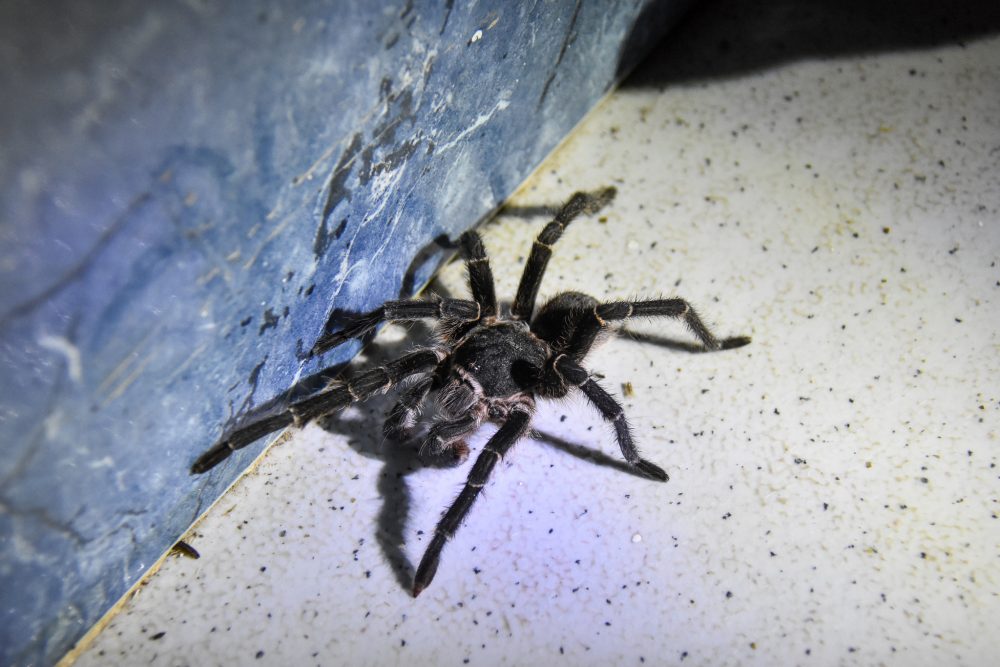
Hotel guest that was creating a raucous in the hallway by fighting with a giant Cane Toad. After seeing this, my friend placed a towel under the crack of his door to keep unwanted guests out of his room.
Into the Pantanal-World’s largest Wetland
The navy finally relented and allowed the locals we hired to take us into the Pantanal. We set off in the morning after changing one broken boat motor with the sounds of Macau parrots shrieking in the background.
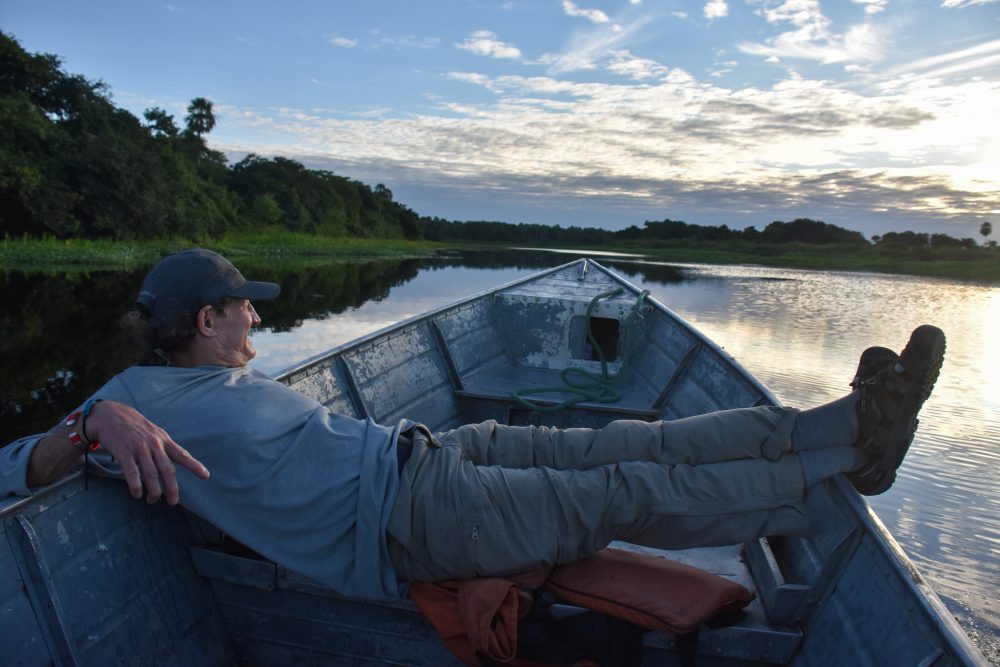
Richard relaxing on the boat as we traveled the Pantanal
As we journeyed upriver deeper into the Pantanal, it didn’t take long before any signs of civilization disappeared. As the river became smaller, it was choked with river weeds-common and hard to navigate through in the months immediately after the end of the rainy season. Patches of this stuff were hundreds of meters long. The boat driver would rev up the motor, ram the weeds as fast as he could to make as much progress as possible and then we would push the boat through the remaining weeds with a long stick or oar.
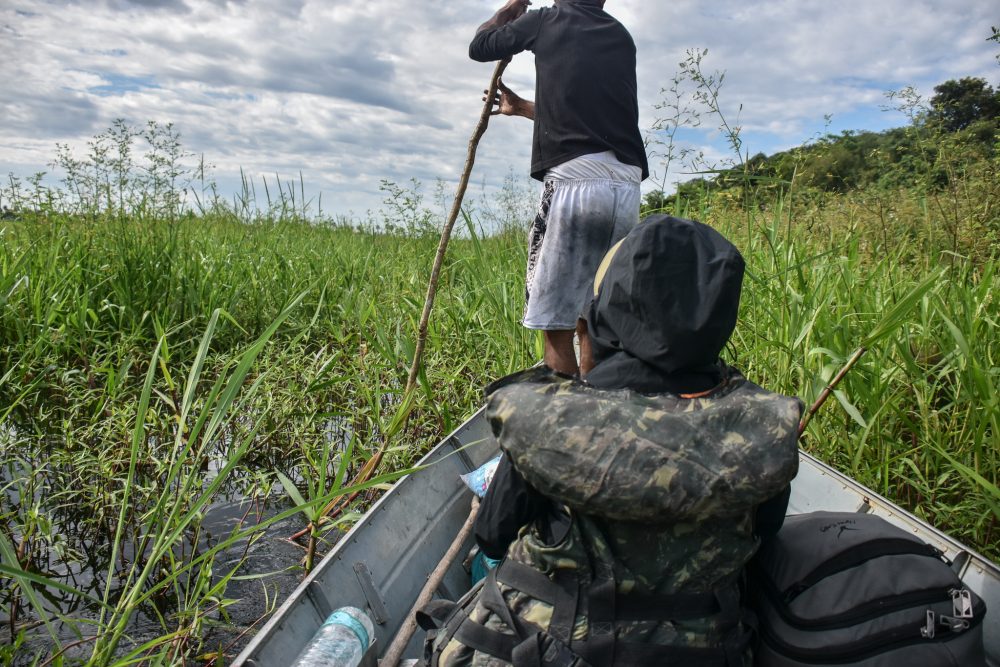
Stuck in the weeds
Tres Gigantes Reserve
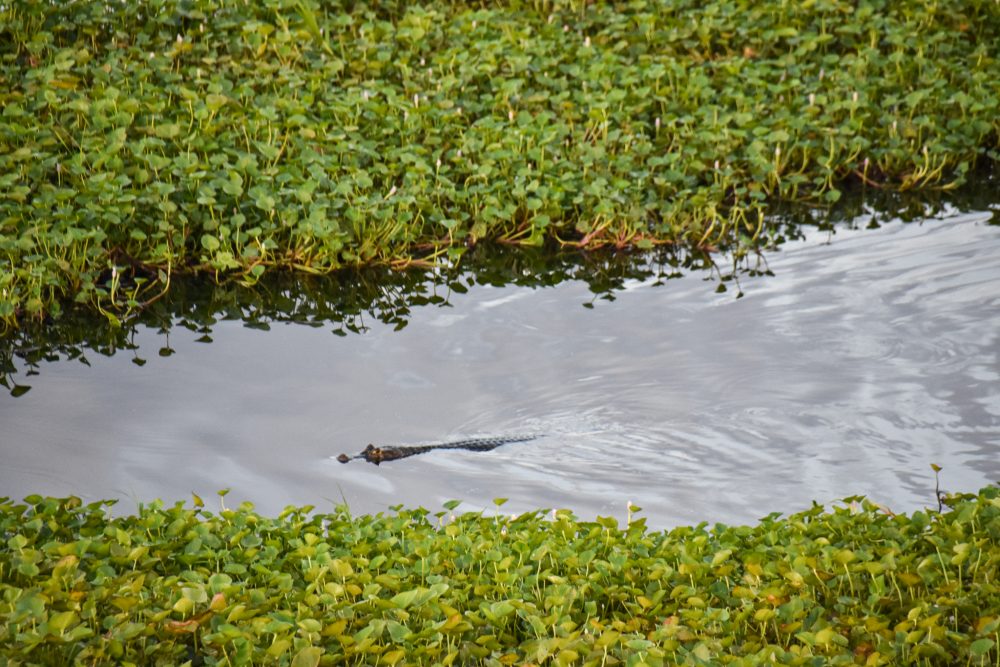
Caiman prowling the waters
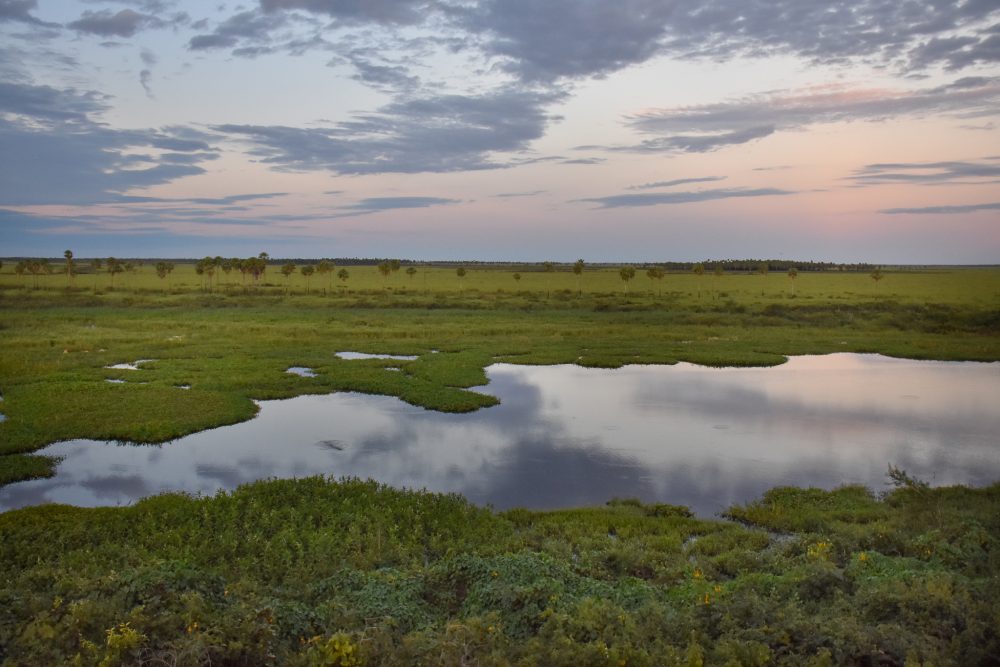
View of the Pantanal
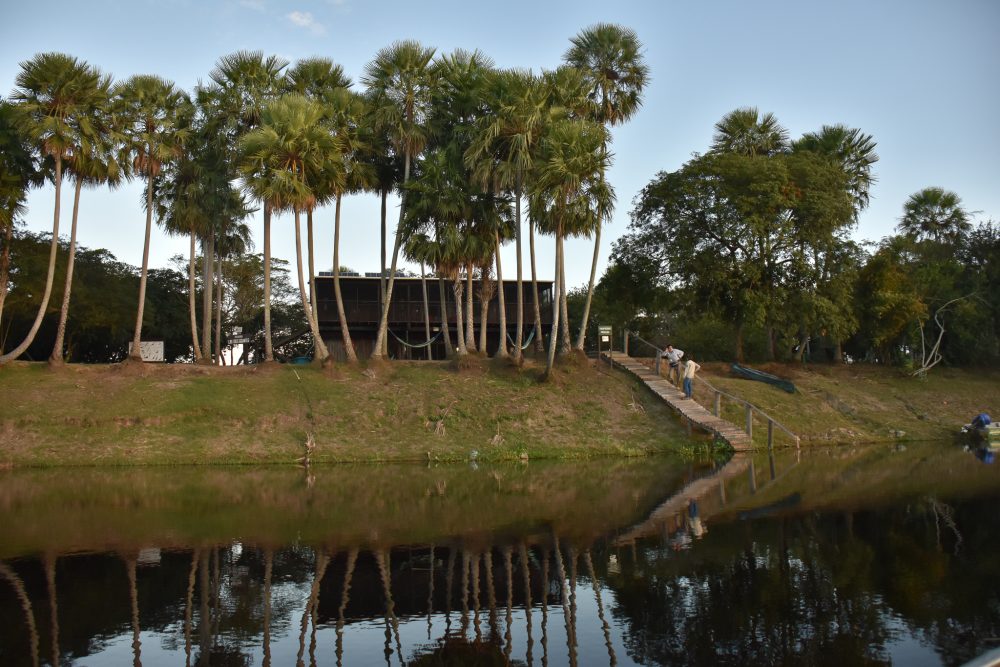
Reserve headquarters where we stayed in rustic rooms
After a few hours, we arrived at the Tres Gigantes Reserve headquarters and where we would sleep in rustic cabin rooms for the next few nights. The ranger, an enthusiastic girl named Carolina welcomed us and showed us around and explained the dangers of venomous snake bites, being stalked by jaguars, crocodiles, and other fun topics. Tres Gigantes was basic with sporadic electricity produced by solar panels in order to pump water from the river for showers and to power the ceiling fans and lights
What struck me immediately upon arriving, was the cacophony of bird life. There were so many exotic colorful birds all around us chattering loudly. Jungle surrounded us and the heads of patrolling Yacares or Cayman crocodiles would pop up in the river from time to time. I knew I was going to have a good time exploring this place.
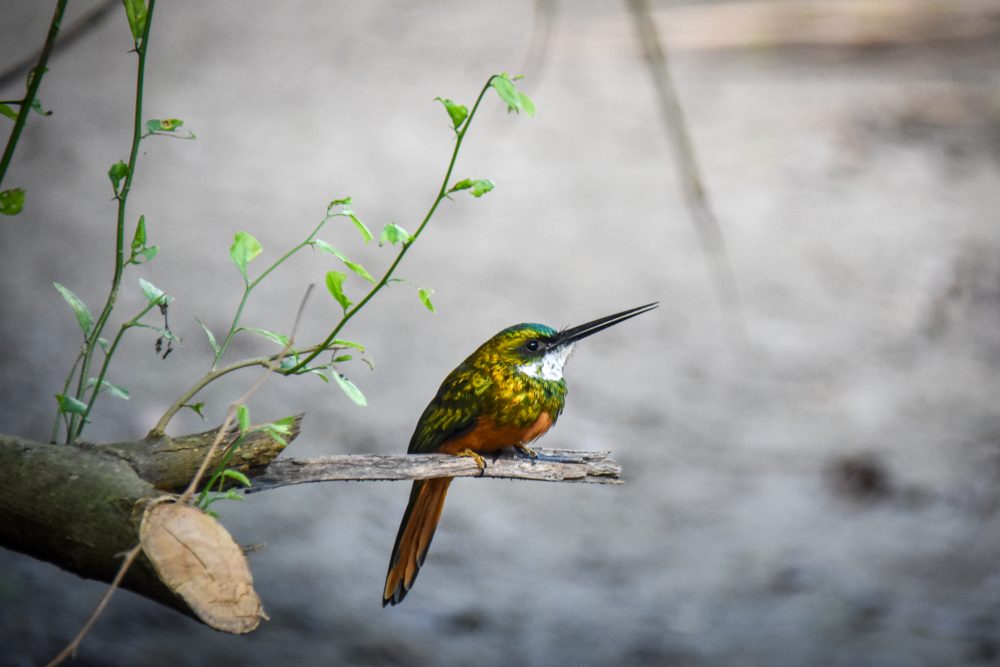
One of the few birds that posed for my camera long enough for me to take a photo
Insect Plagues
The mosquitos were no joke in Tres Gigantes. You never had to venture far to meet one, but nothing could prepare you for the clouds of them waiting for you at the forest edge. A head net was very helpful in the forest and Deet soaked pants and a long sleeve shirt mandatory to avoid complete blood loss. In addition to the mosquitos, at night the foot long flying cockroaches were regular hitchhikers and would often land on your head or butt.
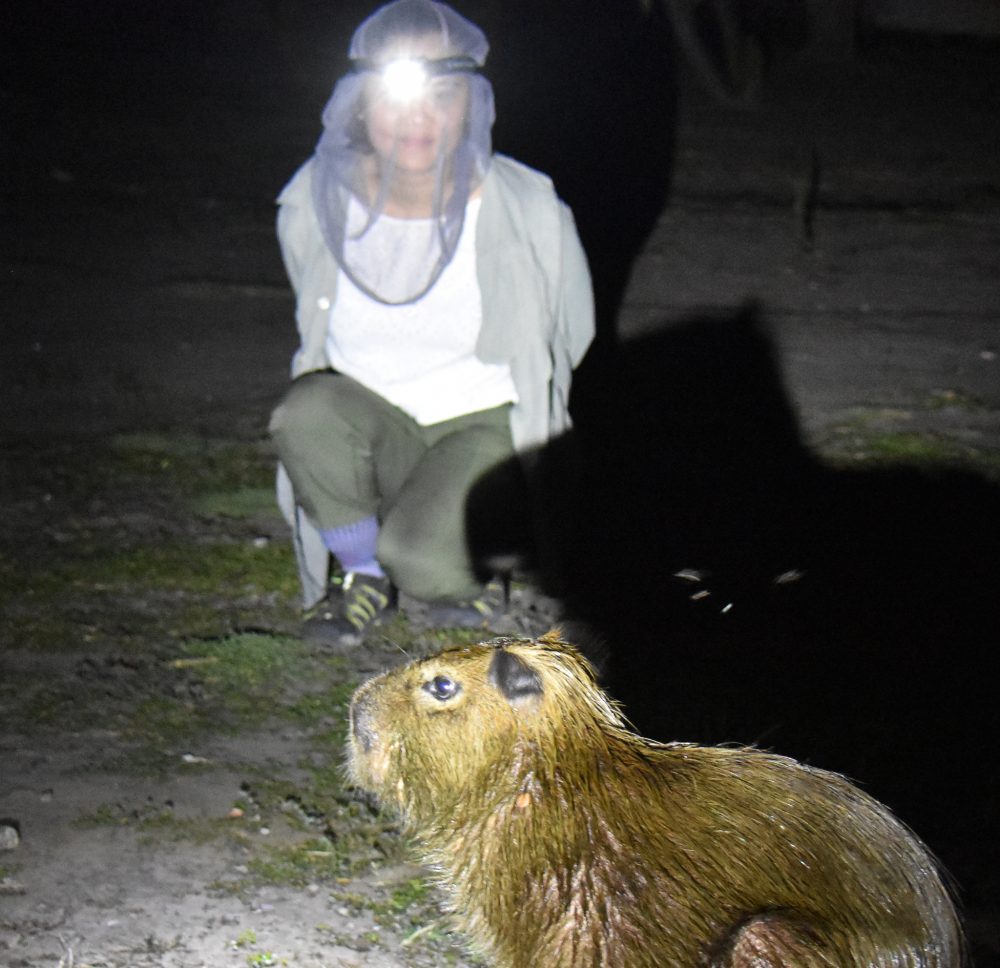
Paula with a mosquito head net in front of our nightly visitor the solo capybara-world’s largest rodent.
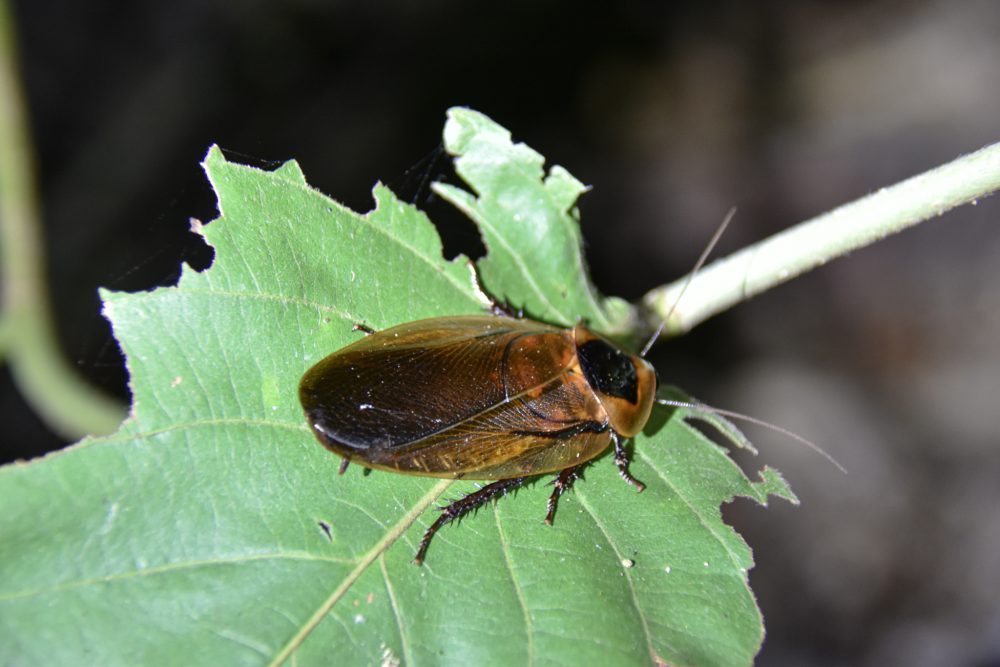
Flying Cockroaches
Wildlife Sightings
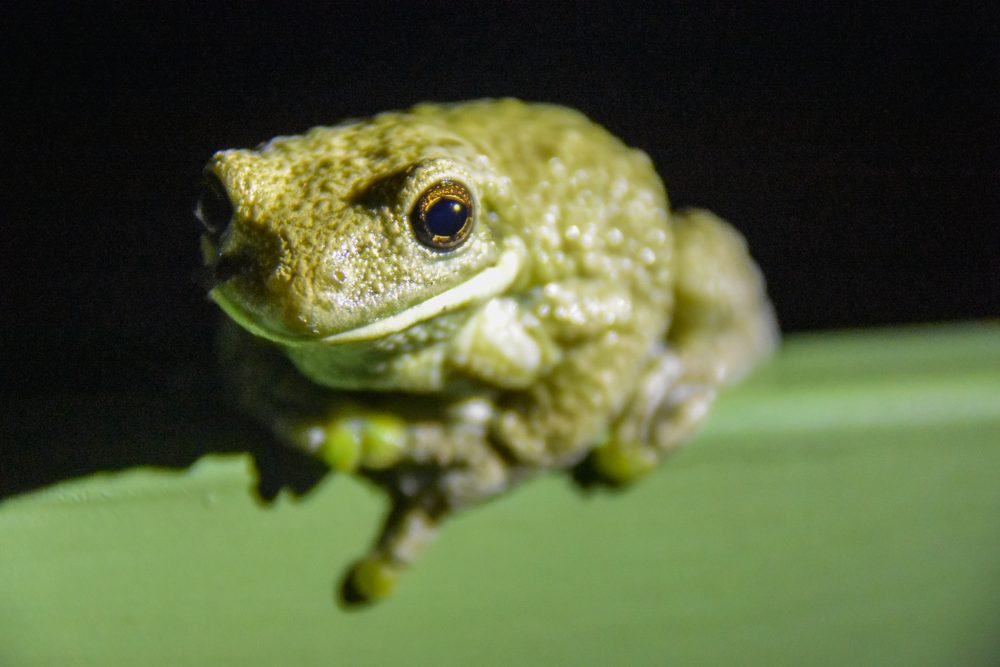
Tree frog that had somehow managed to climb 100 feet to the top of the wildlife watching tower
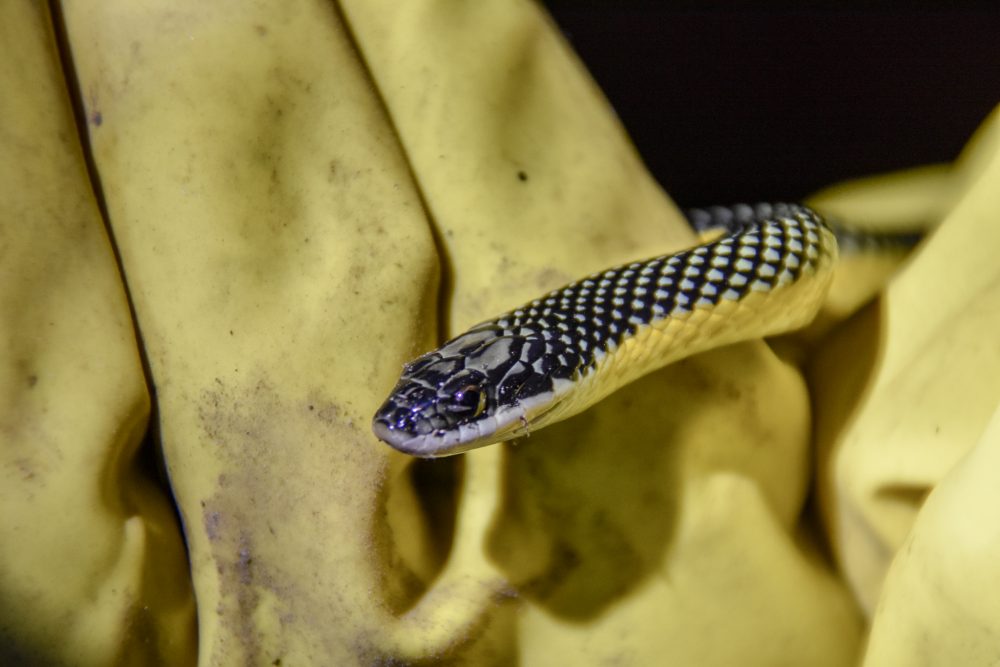
Snake that visited us at night
We stayed in Tres Gigantes for two nights and during this time we explored the trails around the headquarters looking for animals, took the canoe out for piranha fishing and to the other side of the river to walk in Bolivia. The Bolivian side of the river was nothing but Pantanal wilderness too. The only border guards were a few howler monkeys that howled at us.
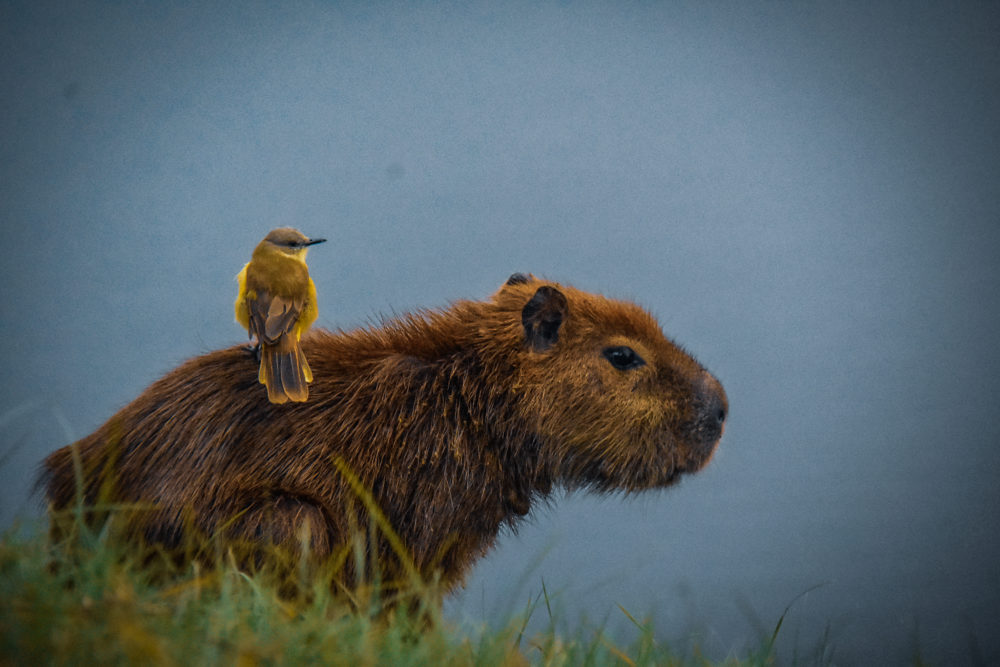
Capybara Photo
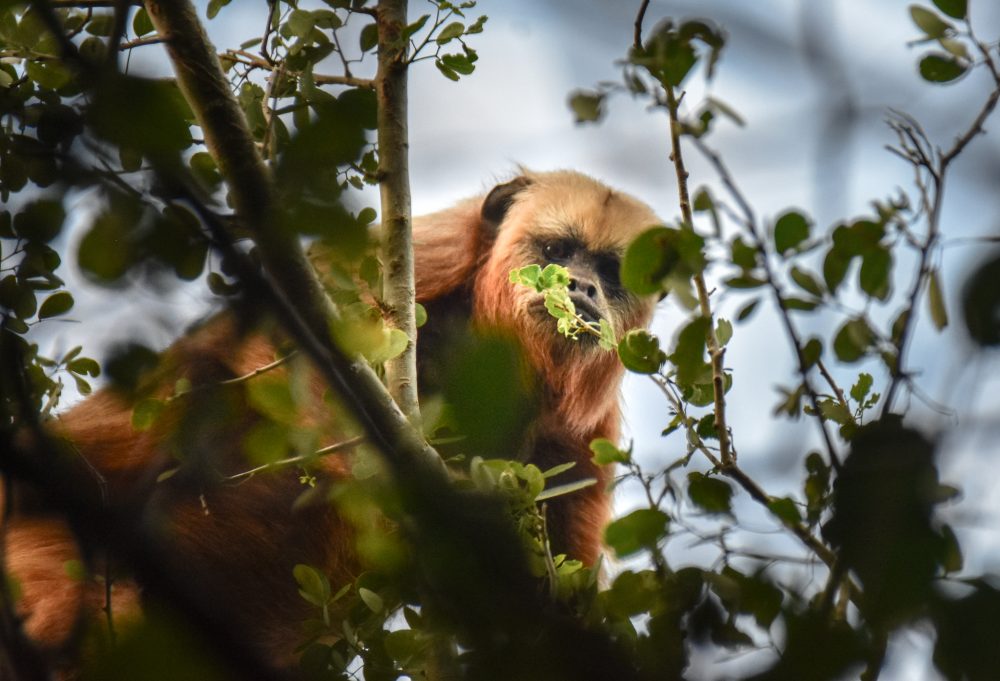
Red Howler Monkey
My favorite place to relax was the 100 ‘ tall watch tower that stood by the river. It was high enough so that mosquitos would leave you alone and it was covered to protect you from the sun. It was a good place to go during the day to watch wildlife and at night to stare at the stars and listen to the strange sounds of the Pantanal
During our time in the Pantanal, we didn’t see the elusive jaguar, giant anteater and tapir but we did see fresh footprints in a few different locations. The giant river otters were hidden behind the river weeds which now blocked the river that continued on into Bolivia. This river unfortunately would have been a great place to explore to spot jaguars and anacondas from the shoreline. Although we didn’t see these animals, we did spot some other amazing animals.
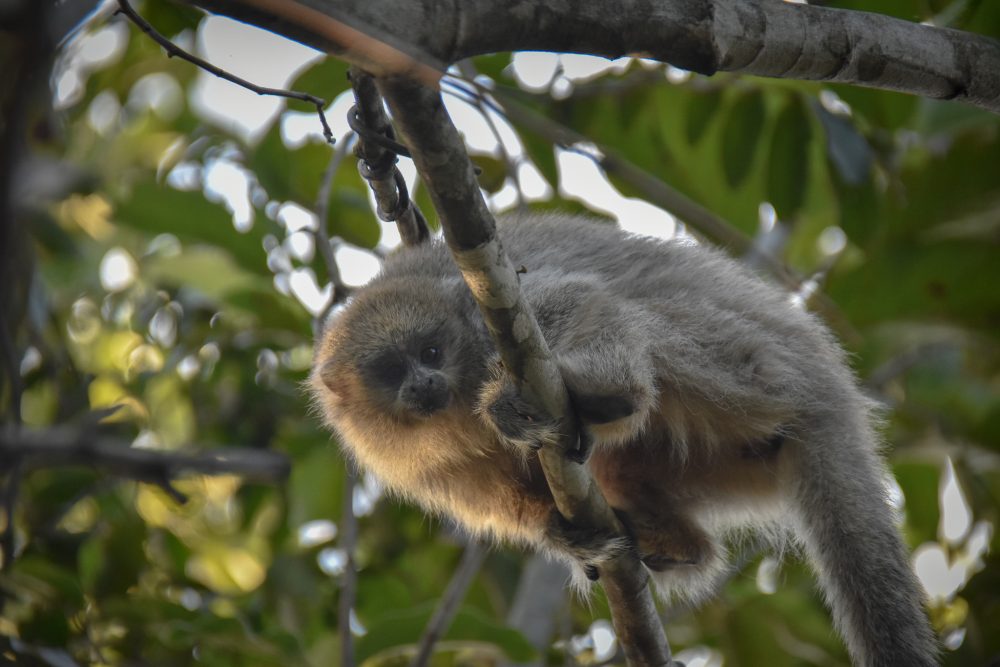
This little Titi Monkey-best name for a monkey- jumped down from the trees to have better look at me and stood only a few feet away staring in utter curiosity.
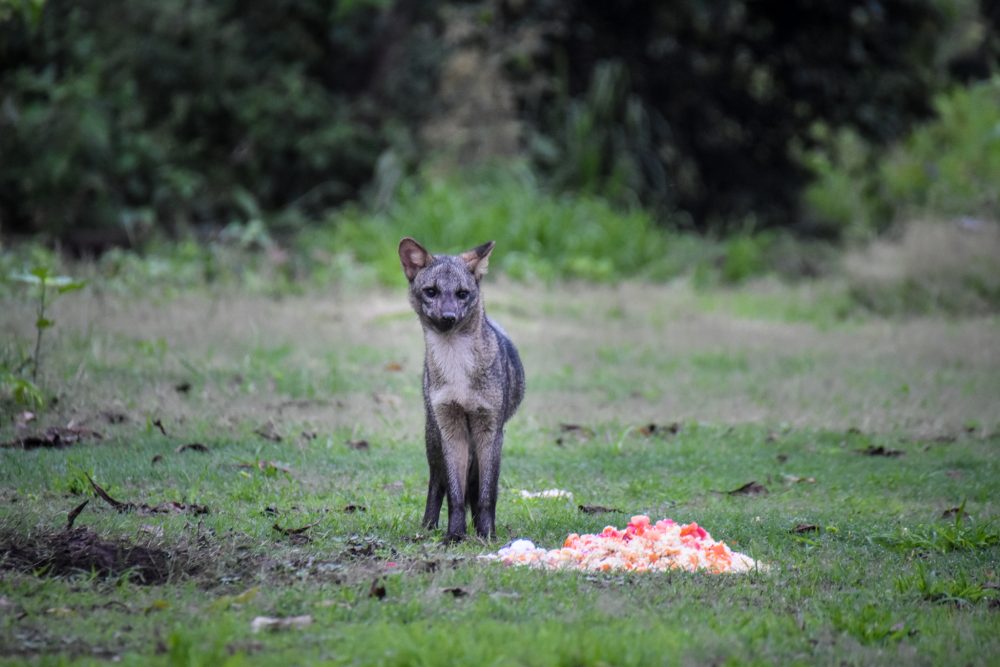
Every afternoon this crab eating fox would appear from the forest to eat the organic scraps from our meals. He was really shy and so I could only get within 100 feet of him.
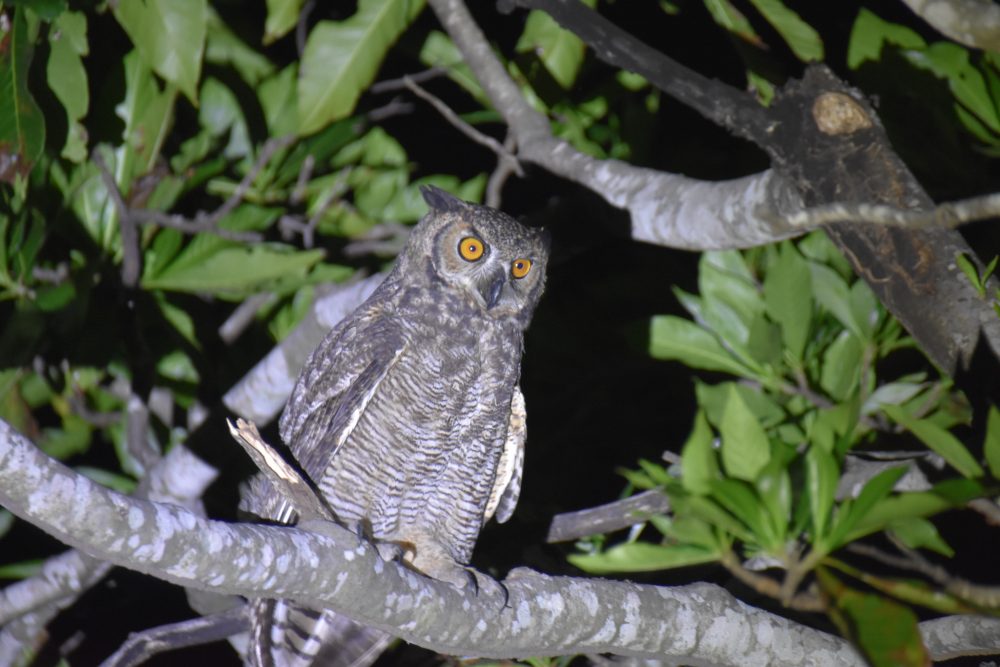
My favorite animal was this huge shrieking owl that came out every night to feud with another owl.

